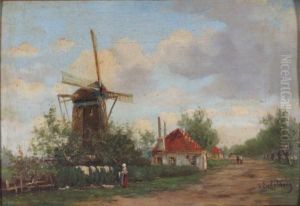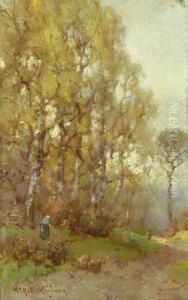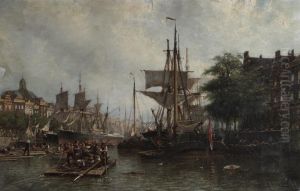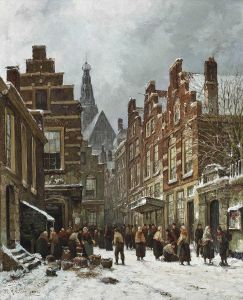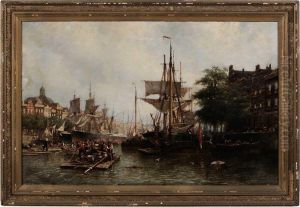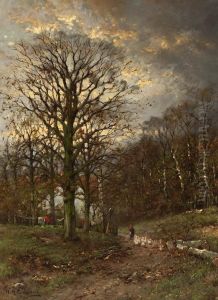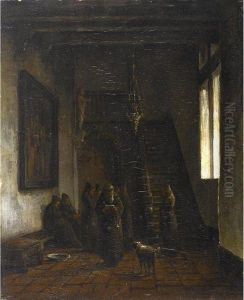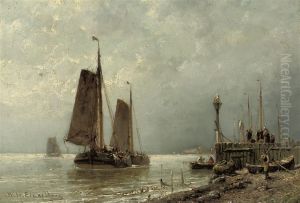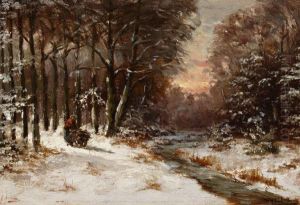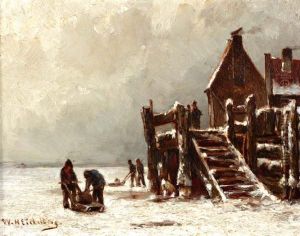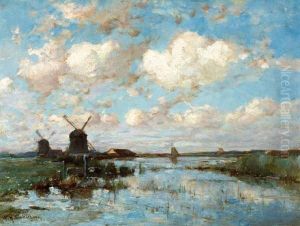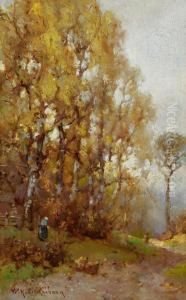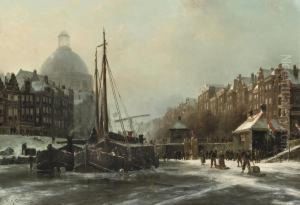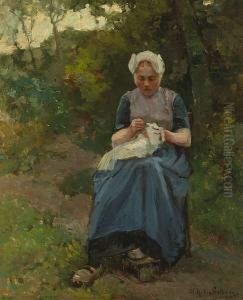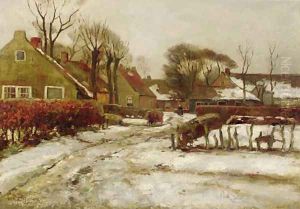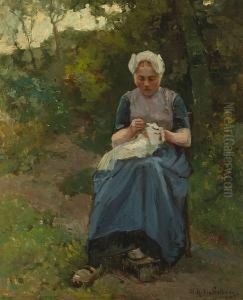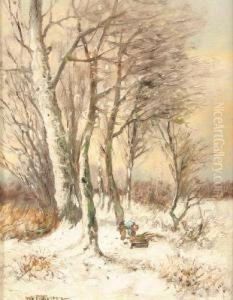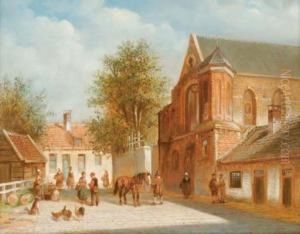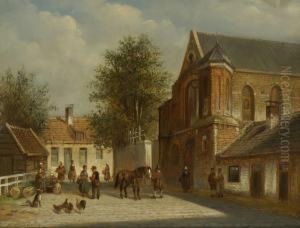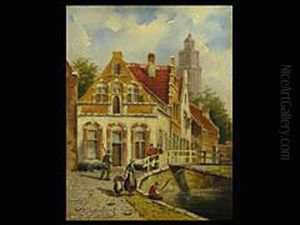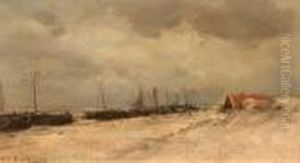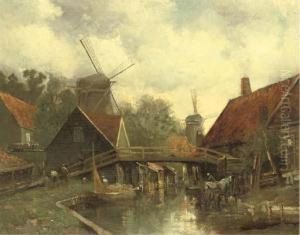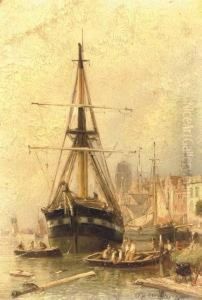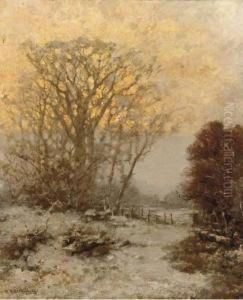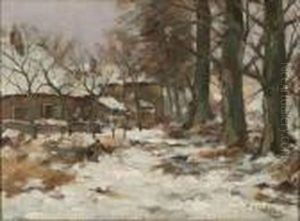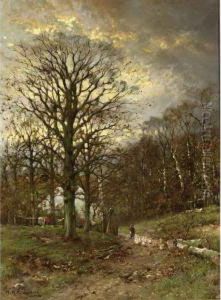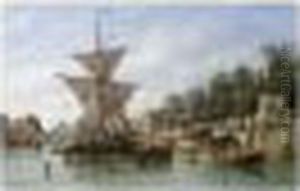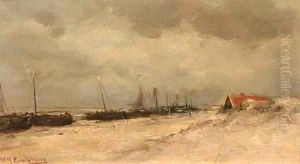Willem Hendrik Eickelberg Paintings
Willem Hendrik Eickelberg was a Dutch artist known for his landscape and genre paintings, which were appreciated for their detailed portrayal of Dutch rural life in the 19th century. Born on September 4, 1837, in Amsterdam, Netherlands, Eickelberg spent much of his life in his native country, where he developed his artistic skills and became a part of the Dutch art scene.
Eickelberg received his early training at the Royal Academy of Fine Arts in Amsterdam, where he honed his technical abilities in drawing and painting. His style was influenced by the Dutch Romantic tradition, which emphasized an idealized, picturesque view of nature and often included elements of human life and activity. Eickelberg's works, characterized by their fine detail and use of light, often depicted the serene landscapes of the Dutch countryside, waterways, and the daily activities of the rural populace.
Throughout his career, Eickelberg exhibited his works at various art shows and gained recognition for his contributions to Dutch art. He was known for his ability to capture the changing effects of light and atmosphere in his landscapes, a quality that made his paintings resonate with viewers. His genre scenes, which often included figures such as fishermen, farmers, and villagers going about their daily routines, were celebrated for their narrative quality and attention to the subtleties of rural life.
Willem Hendrik Eickelberg's paintings remain part of Dutch cultural heritage and can be seen in museums and private collections. They continue to be studied for their reflection of 19th-century Dutch society and the rural landscape. Eickelberg passed away on October 10, 1899, leaving behind a legacy as one of the notable Dutch landscape and genre painters of his time.
